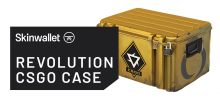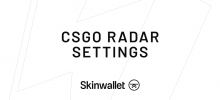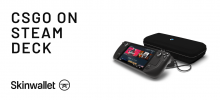Complete Guide to Selling CS:GO Skins on Steam Marketplace in 2020

A certain part of online games available on Steam has implemented various types of drop systems, which in turn are stimuli for a whole new level of economy in the game market. Steam Marketplace is a service that allows users to deal with items they got hold of by manner of posting to buy and sell offers and listing a collective catalogue of those publically. It’s available straight away from the Steam application and most of the functions are operated with just several clicks, thus very often making it the first choice of any user that wants to trade some of the items they acquired during hours of play.
Selling CSGO skins on Steam Marketplace is easy and doesn’t require anything but a non-banned Steam account. There’s an offer mechanic that allows you to either put up your items for sale or look for specific offers. We’ll look closer at that in a moment.
There are also alternatives to Steam Marketplace provided by third-party services and sites. They function in a similar manner, yet are different in several aspects. First of all, the interface is different for each of them, depending on what philosophy did the developers follow. Also, they are usually bound with additional functionalities – not unexpectedly, they are sometimes integrated with gambling mechanisms too.
What is Steam Marketplace exactly?
When you log into your Steam account, there are many services and functionalities available from the main menu. When you hover over the Community section, you’re able to enter the marketplace (sometimes abbreviated to Market in Steam lingo). This view allows you to explore the list of offers. You can browse them by the game or use the search engine to find exactly what you’re looking for. A helpful tip – the engine works in your application’s language, so look up the translated names of items you’re looking for.
The price variety of available items and skins is vast. There are a lot of common items that can cost just a couple of cents, and there are barely-ever-dropping skins or knives which won’t go for less than $100 and can reach thousands of dollars in price if they are of a certain desired kind.
Unfortunately, there are certain limitations on the volume of the information displayed on an item. In this matter, third-party marketplaces have the upper hand of individual listings that allow traders to make clearly presented special offers on rare configuration items. For example, selling CSGO skins from Steam Marketplace with curiosities like Blakiimov AWPs will be less transparent, as there’s no way for the potential buyer to check the exact float of your skin in Steam.
Things you should know about Steam Marketplace in the first place
Before you start trading, be aware that in order to use Steam Market, you need to follow certain regulations. First of all, you need to activate Steam Guard on your account. To do this, you will need to install the Steam app on a mobile phone to provide an authentication token each time you log in. Every time you log into your Steam account on a new device or a new browser on the same device (including your fist login after enabling Steam Guard), your account will be restricted from using any authentication-requiring functions of Steam for 15 days, and this includes trading with users or selling CS GO skins on Steam Marketplace. It might be a bit of a downer, but it was introduced to help prevent account hijacks and item thefts. Also, be wary of your trade activity, as for example beginning a lot of trades and canceling them might alert the system moderators. Trade malpractices might result in a permanent trade ban, where you still get to use your Steam account with its games, but every item you’ll drop will be now stuck with you forever.
How do you sell skins at Skin Marketplace?
Once you’re over the restriction period, you have two ways to proceed with selling your items. You can either go to the Community Market section, click the “Sell an item” button and proceed with choosing an item for sale from the list, or you can just go to your inventory, preview the desired item and press “Sell” button in its description window. At this stage, Steam will display a graph with the median of prices for which this type of item has been sold in the past. If the differences in prices are low, it will show a short period of time. If they are big, they will be displayed over a longer period of time. A price will be suggested, but you make the final call on how much you want to list it for. You will also be informed about how much money you will get after taking away Steam’s commission. After you put it up, it will be displayed in your active listings in the main Market view. At Steam Marketplace buying CSGO skins is just a matter of confirming a selling offer, so Steam will send you a message (and an email notification, if you didn’t turn them off) once someone buys your item.
What payment methods can you use for Steam Marketplace?
The official payment method and currency holder for Steam Marketplace is the Steam Wallet. In the past, deals and sales would only happen with the use of dollars, but since 2013 Valve started adding local currencies support. As of now, Steam Wallet can be charged by PayPal, Paysafecard, Visa and MasterCard credit cards, American Express transfer, Skrill and Przelewy24.
Additionally, Steam takes away 5% of every transaction, meaning that when you list an item for a price, you will get 95% of the given price. The fee is never lower than $0.01, though. This fee is used to prevent fraud and provide a commission for Valve to fund the maintenance of the service.
Pros and Cons of Steam Marketplace
In comparison to external services, Steam Marketplace has some obvious upsides and downsides. It’s never all black and white though, so let’s examine them in terms of usage.
What’s great about selling skins from Steam Marketplace’s user interface is that due to its implementation in Steam application itself it takes only a matter of seconds to put up an offer with an item from your inventory. You can also view available listings of a given item by just clicking a link in its description. If you don’t raise your prices too high, it doesn’t take long to sell an item. Additionally, if you’re only using the listings and not trade offers, you lower your chances of getting scammed by a lot.
On the bleak side, the biggest issue of Steam Marketplace is the Steam Wallet. Once you charge it with cash or earn some credit by selling items, the funds are stuck in the Steam system and you cannot pay them out, not even to the e-wallet services. This means the money you will earn will have to be spent on games or items within Steam. Additionally, because of how the system works, the prices are usually dumped to find a buyer quickly. Third-party marketplaces allow you to pay out the cash you made on the item deals and sell many similar items in one session. You need to see what works best for your needs.
Summary
Whether it’s Team Fortress 2 items, Dota 2 items or CSGO skins selling Steam Marketplace provides an easy-to-use and a secure system to deal with your findings and earn more credit for future purchases in Steam Store. It’s easy to list your offer and preview the median market prices. However, if you want to monetize your skins and items, especially in larger quantities, you should consider third-party marketplaces. Otherwise, Steam Marketplace is at hand whenever you use Steam and is great in case of casual sales.











